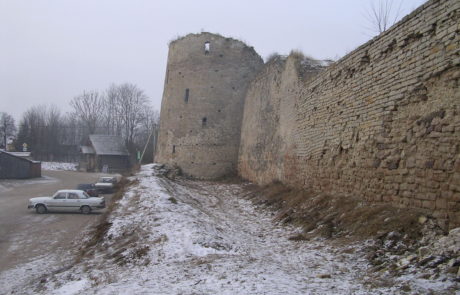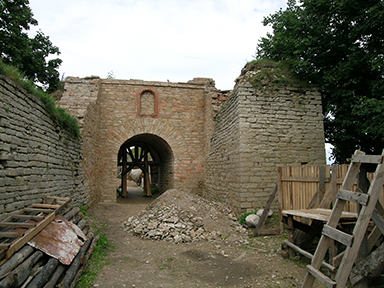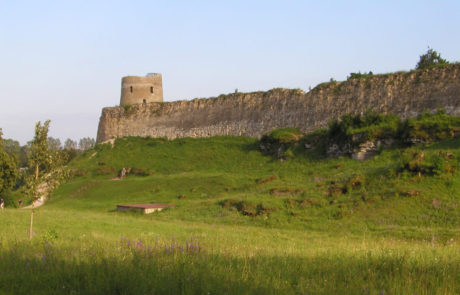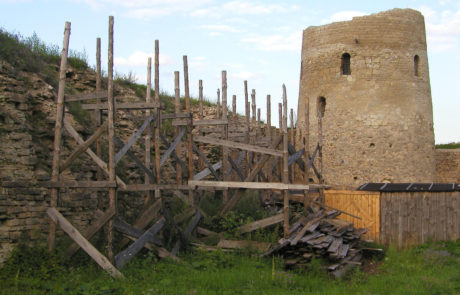Izborsk, Russia
Catalyzing local entrepreneurship by protecting one of Russia’s last remaining medieval garrisons
Two hundred miles southwest of St Petersburg near Russia’s desolate border with Estonia, one of the country’s last remaining medieval garrisons, Izborsk Fortress conjures up Game of Thrones with its impenetrable limestone walls and commanding watchtowers. In fact, Izborsk first appeared in chronicles of the region dating to 862. Established as a small Slavic Krivich settlement, Izborsk evolved to guard the Russian Empire’s Western Frontier against German, Livonian and Polish attackers until the Northern War with Sweden ended in 1721 when the border shifted westward.
Three hundred years of rain, snow, freezing and thawing weather pummeled the abandoned bastion. Wood roofing and lime mortar disintegrated. Thick fortress walls, towers and belfries crumbled. This hazardous deterioration threatened to erode the last remaining structures at Izborsk Fortress beyond repair when Global Heritage Fund partnered with the Ministry of Culture of the Russian Federation and the General Directorate of the Pskov State Department of Restoration to prepare a Master Conservation Plan for this jewel of Russian history.
Tapping our Emergency Fund, raising matching capital from the Russian government and working with leading Russian archeologists, Global Heritage Fund and our local partners completed urgent stabilization and conservation of the most threatened sections of this historic monument including Nikolski Gate and Eastern Wall. To fund and manage a complete restoration to the highest archaeological conservation standards, we helped to establish the Izborsk Project Trust as a matching co-investment vehicle with the Russian government and private sector donors.
Understanding the value of local training and economic development in the surrounding community to the long-term protection of heritage, Global Heritage Fund also dedicated critical funding and expertise to generating new employment opportunities in the nascent tourism economy and to training a professional conservation work force in Izborsk. We led the design and development of the first professional site interpretation system in Russian, English and European languages for the on-site museum at Izborsk Fortress, to improve international access while providing local jobs.
Our efforts catalyzed entrepreneurship in souvenir sales and expanded tourist services around the heritage site. Hundreds of “Excellent” ratings and five star reviews on TripAdvisor may seem unscientific measurements of our success yet these very modern metrics signify a more promising future for this community and its historic citadel that long kept Russia culturally intact.






